
The ground floor has the kitchen, the library, Map room, China Room, and Diplomatic Reception Room.
https://www.edrawsoft.com/article/white-house-floor-plan.html

The Map Room is so-named because it was used by President Franklin Roosevelt as a situation room from which to follow the course of World War II. It now serves as a private meeting room for the president or the first lady. This room is about 27 1/2 feet by 22 1/2 feet. The room was decorated in 1970, and again in 1994, as a sitting room.
The simple sandstone mantel was made from stone removed during the Truman renovation of the White House. Above it hangs the last situation map prepared in this room for President Roosevelt, on April 3, 1945.
Map Room had a Pool Table:
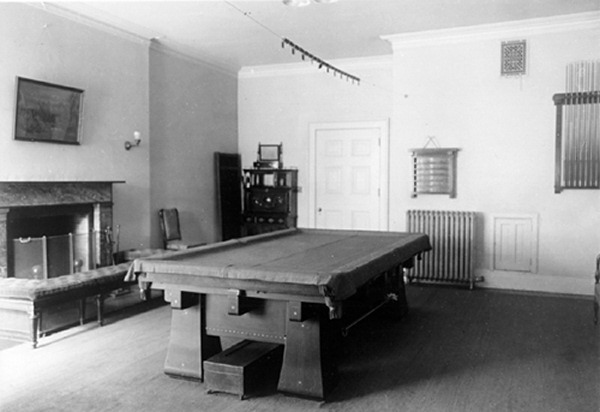
Until 1929, the map room had historically been used as a billiard room by many presidents, and occasionally for doctors' visits. The billiard-room, having been installed during the Arthur Administration and abandoned at the coming of [Theodore] Roosevelt, who did not find the game strenuous enough for him.
After TR renovated the basement into a useable ground floor, the room was again used for billiards by Wilson and Coolidge.

There are two types of Official White House China – historical pieces dating back to our country's earliest days, and more modern collections still used to serve honored guests at formal state dinners. Historic pieces are displayed in the China Room on the ground floor of the White House.
Few pieces remain of the earliest Presidential porcelain. Initial orders were small, and over time, dishes were either damaged or sold or given away as new Presidents took office and introduced their own china. Not until the 20th century was this practice of disposing of "extra" china prohibited by Congress. Since then, Official Presidential China should, ideally, either remain in the White House or be destroyed.
Woodrow Wilson 1918 State Service Plate:

http://blog.americanheritage1.com/blog/where-is-china-stored-in-the-white-house
 Office of the Curator:
Office of the Curator:Today, the White House Collection contains more than 60,000 decorative and fine arts pieces, overseen by a team of curators. While curatorial staff members have managed the collection since the early 1960s, there was no designated caretaker of White House sculpture, chinaware, furniture, and paintings for much of the home's history. In the early nineteenth century, the role of a "curator" was not yet professionalized, but as museum collections management and curatorial practices became more standardized in the twentieth century, so did the care of the White House Collection.
In March of 1961, Mrs. Kennedy hired the first White House Curator-Lorraine Waxman Pearce. The position of curator was not made permanent until signed Executive Order 11145, formally establishing the position of White House Curator, and creating the Committee for the Preservation of the White House. Today, the Committee and the White House Historical Association work closely to advise on preservation projects and acquisitions at the Executive Mansion.
Subsequently, the White House Office of the Curator, whose small staff includes the Curator, a Collections Manager/Registrar, an Associate Curator of Decorative Arts, an Associate Curator of Fine Arts, and a Curatorial Assistant, maintain the White House and its historic fine and decorative arts collection from their office on the Ground Floor.
Since 1961, the following individuals have served as curator:
- Lorraine Pearce (1961-1962)
- William Voss Elder III (1963-1963)
- James R. Ketchum (1963-1970)
- Clement Conger (1970-1986)
- Rex Scouten (1986-1997)
- Betty Monkman (1997-2002)
- William Allman (2002-2017)
- Lydia Tederick (2017-present)
As non-political appointees, curators and their staff typically remain at the White House across multiple administrations and often come from professional backgrounds in museums and art galleries.

One of three oval rooms in the White House and is the point of entry to the White House for a visiting head of state following the State Arrival Ceremony on the South Lawn. The room has four doors, which lead to the Map Room, the Center Hall, the China Room, and a vestibule that leads to the South Lawn. In 1960, a gold-and-white color scheme was chosen and the room was furnished as a drawing room of the Federal Period (1790-1820). It contains many fine examples of the cabinet craftsmanship from the Northeast states. A Regency chandelier of cut glass and gilt bronze was added in 1971. The striking panoramic wallpaper, called "Views of North America," was chosen by Jacqueline Kennedy in 1961 and was originally printed in 1834 Alsace, France. The complete set of 32 scenes, based on engravings of the 1820s, depict the Boston Harbor, the Natural Bridge in Virginia, West Point, New York, Niagara Falls, and the New York Harbor, landscapes that were particularly admired by Europeans.
The 2018 Rug:
The current rug maintains a similar feel to its predecessors, very stately and detailed while still allowing for the focal point of the room to remain the amazing Zuber Wallpaper selected and installed by First Lady Jackie Kennedy.
The Presidential Seal is in the center of the rug and in place of the state seals each state's official flower in the border.
The taxpayer does not pay for the new rug because of the White House Historical Association, https://whitehousehistory.org, footing the bill for it through private donations.
https://www.jenniferpickens.com/blog/mrs-trumps-new-diplomatic-reception-room-rug
The 1983 Rug:
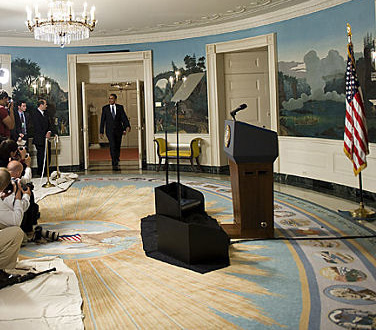 In shades of blue and gold, was specially woven for the room in 1983. Its border incorporates the seals or coats of arms of the fifty United States in an elliptical border. These border emblems are inspired by classical Etruscan and Roman motifs.
In shades of blue and gold, was specially woven for the room in 1983. Its border incorporates the seals or coats of arms of the fifty United States in an elliptical border. These border emblems are inspired by classical Etruscan and Roman motifs.
The 1975 Rug:

The 1963 Rug:
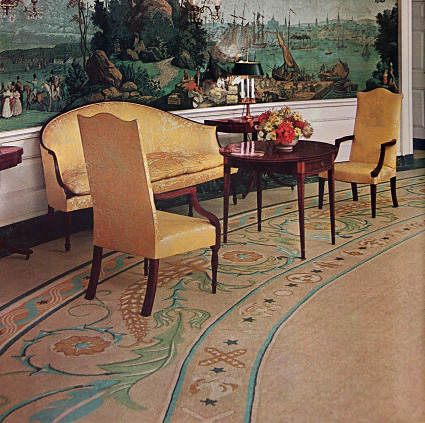
https://www.bashircarpets.com/en/white-house-diplomatic-reception-room-rug

The Library was built in 1935 and houses more than 2,800 different books representing the best of American history and literature.
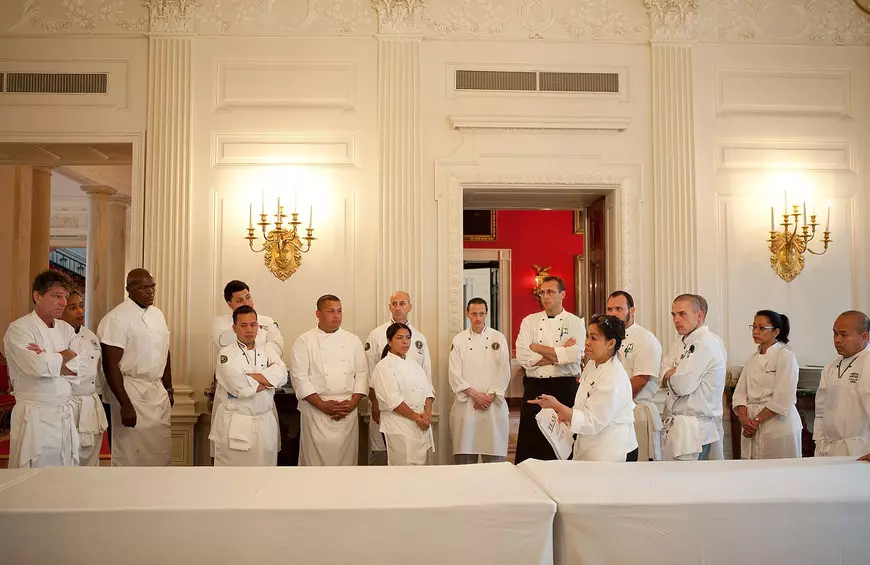
The White House kitchen staff has an important job: feeding the president and his family. In addition to the everyday meals, snacks, and drinks, the kitchen is also responsible for state dinners and other important gatherings.
- The Button - each president has a button on his desk in the Oval Office, from which he can order any snack he chooses.
- The Food is Screened by the FBI - food is carefully monitored before it's served to The President. International food is shipped to a staffer's address so no one knows who the final recipient is, room service is sent to a companion's hotel suite, and staff members do the grocery shopping. Outside food is not permitted inside the White House.
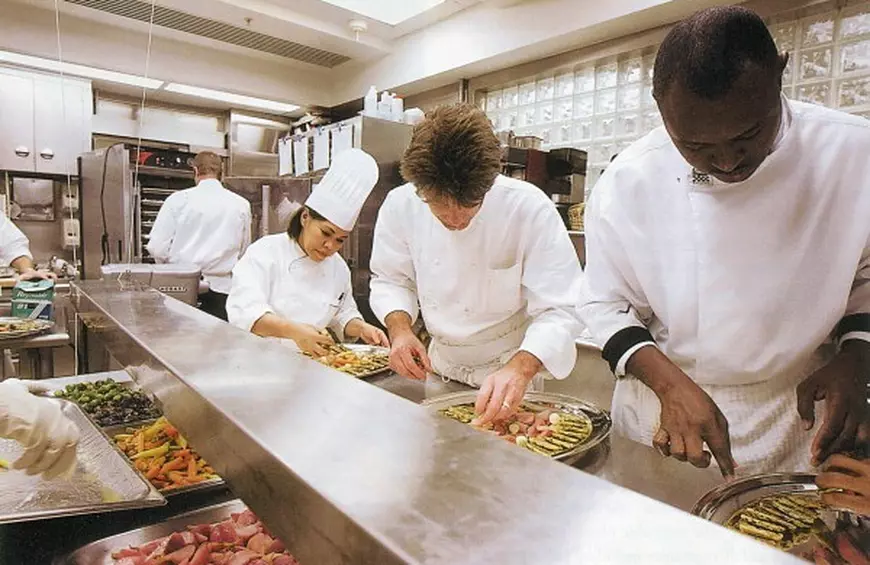
- The Kitchen Can Serve a Large Party at Any Given Moment - At the drop of a hat, the White House kitchen is able to serve a dinner to 140 guests. If the president and family are hosting a larger affair, they're able to serve hors d'oeuvres to upwards of 1,000 people.
- The President pays for his own food - At the end of every month, the first family is given a grocery bill and must pay the tab themselves.
- There are actually 3 kitchens - In addition to the main kitchen, the White House also boasts a pastry kitchen and a "family kitchen" in the Executive Residence for casual breakfasts and meals that the first family can enjoy together.
https://www.thedailymeal.com/entertain/secrets-white-house-kitchen-slideshow/slide-8

It contains a collection of European and American gilded silver (vermeil) objects from 1700-1950s. Lady Bird Johnson's portrait is in this room, along with Jackie Kennedy.
https://valeriewritenow.com/2017/04/28/the-white-house
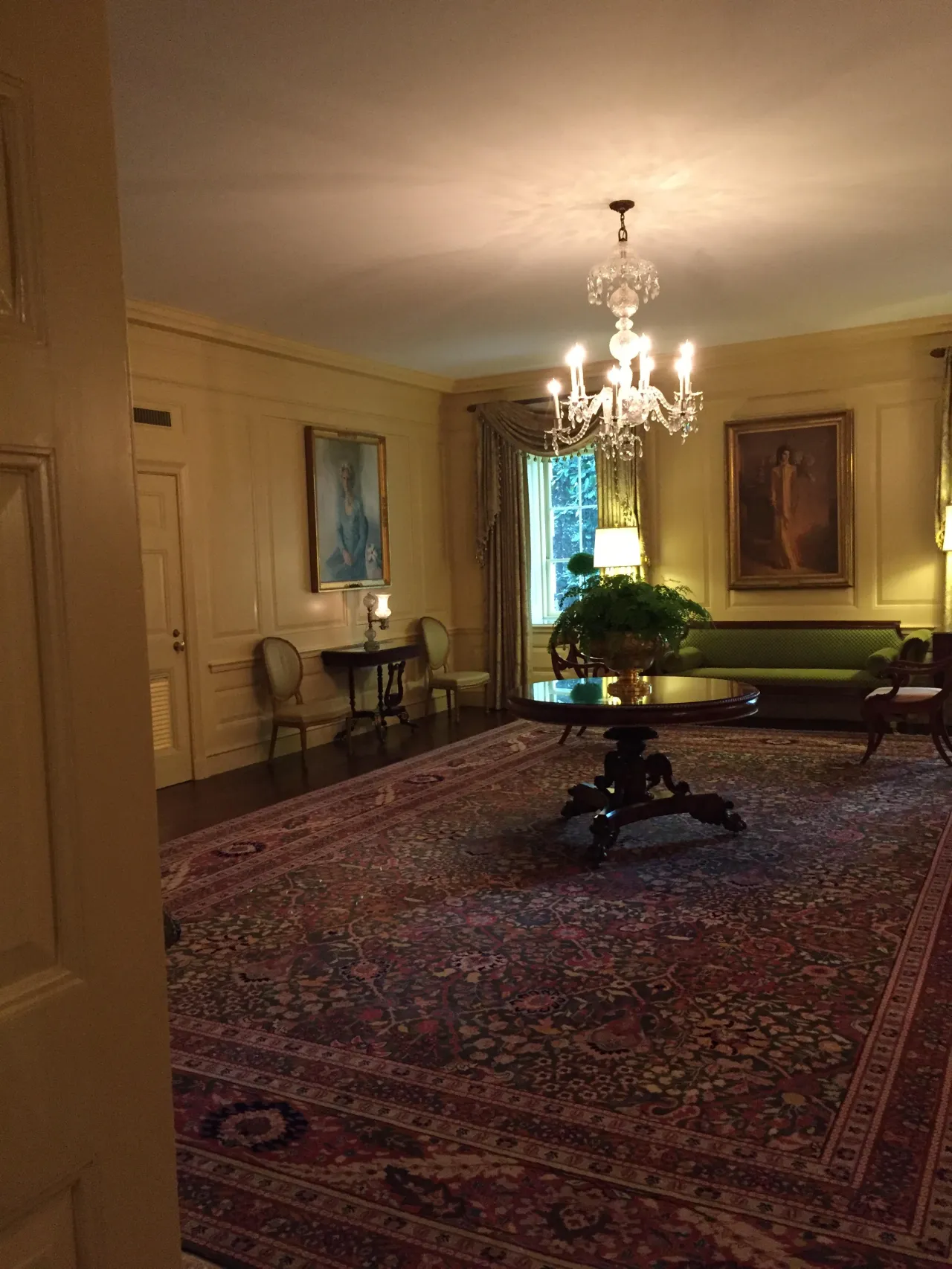
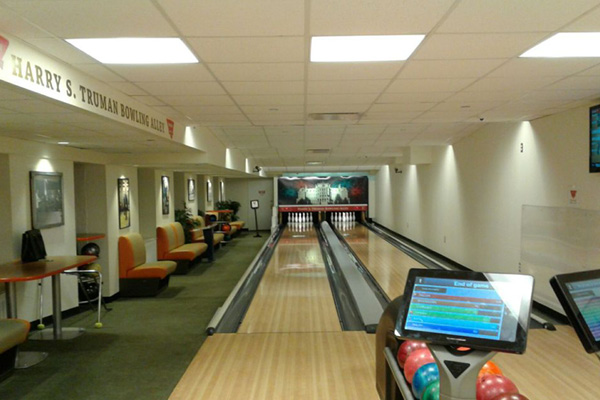
Bowling made its first appearance at the White House in 1947 when friends of President Harry S Truman built a two-lane alley in the West Wing. Even though Truman wasn't much of a bowler himself (apparently he preferred poker), his staff thoroughly enjoyed using the lanes, and they even created a league made up of Secret Service agents, household staff, secretaries and groundskeepers that went on to compete in tournaments across the country.
In 1955 the alley was moved to the basement of the Executive Office Building by President Eisenhower; however, staff and special guests could still use the lanes recreationally. But in 1969 as the popularity of bowling was at its peak, President Nixon had a second, one-lane alley built under the driveway near the North Portico for his personal use.
https://www.tenpinalley.com/this-is-not-politics-this-is-bowling-there-are-rules





